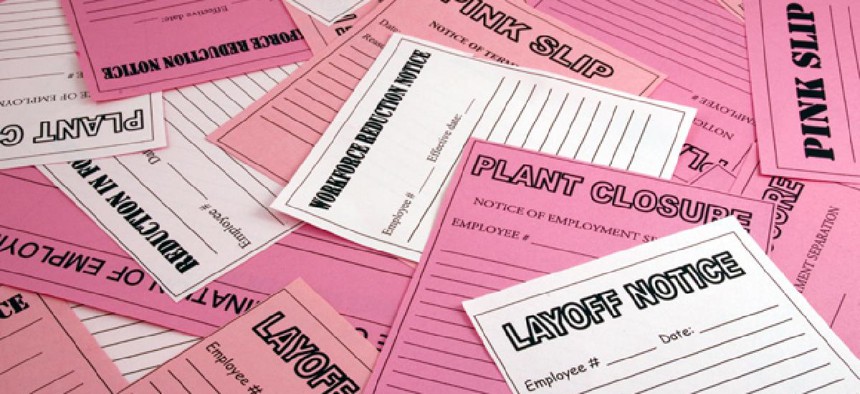
Eric Von Seggern/Shutterstock.com
Federal Contractor Issues Layoff Warnings, Citing Budget Uncertainty
BAE Systems sends 3,500 WARN notices, other contractors take wait-and-see approach.
European weapons maker BAE Systems reported stronger-than-expected earnings Thursday, after issuing conditional layoff notices to 3,500 shipyard employees in Florida, Hawaii and Virginia, citing uncertainty in the federal budget.
BAE Systems sent the layoff warnings Wednesday to comply with the 1988 Worker Adjustment and Retraining Notification Act, which requires companies with more than 100 employees to issue notices 60 days before mass layoffs or plant closures.
In an email to employees in Mayport, Fla.; Norfolk, Va.; Pearl Harbor, Hawaii; and San Diego, the company said an “intent to cancel” order from the Navy regarding ship maintenance availabilities necessitated the distribution of the notices.
A spokesman for BAE Systems told Government Executive that this round of WARN Act notices were tied to the upcoming expiration of the continuing resolution on March 27, not the budget sequester slated to take effect on March 1. He said the company was awaiting more information on specific program cuts from sequestration before evaluating possible layoffs.
Pentagon Comptroller Robert Hale told reporters Wednesday that $40 billion of the cuts the Defense Department must make over the next seven months under sequestration would come from weapons systems and services contracts.
“We don’t anticipate that we will cancel any contracts,” Hale said, though the department likely will decline to pick up all contract options. “If you’ve got a contract, we will pay you,” he said. The department is required under the law to have a detailed spending plan by April 1.
BAE systems, whose U.S. shipyards employ some 5,000 workers, saw its profits drop by less than expected thanks to higher sales in international markets, such as Saudi Arabia, the company announced Thursday. BAE Systems CEO Ian King justified a $1.5 billion dollar share buyback, saying there are enough “green shoots” in other businesses to warrant returning shareholder money.
The company noted that its U.S. division still contributed 40 percent of revenue and said that areas such as the sale of land vehicles to the U.S. military have seen year-on-year reductions since 2008.
Sen. Tim Kaine, D-Va., said he sympathized with the workers at the shipyards and urged Congress to come together to avoid damaging military readiness. He visited a shipyard on Tuesday, a visit that president Obama was set to follow next week.
“All that's required is a willingness for leaders of both parties to take responsibility for this self-inflicted crisis and find a reasonable compromise,” Kaine said in a statement.
Other large contractors also are feeling the pinch of slowing defense spending, but are not factoring in sequestration in their 2013 business plans. Officials from the country’s largest contractor, Lockheed Martin Corp., told investors in January that the company was not assuming the impact of sequestration in its yearly forecast, but it issued voluntary layoff notices in February to information technology workers as part of “an ongoing affordability” initiative.
Boeing Co. told Government Executive it also was waiting for more information on sequestration before issuing WARN Act notices. However, the company announced layoffs at a facility in Texas in January, citing falling demand from its defense business.
General Dynamics, which announced a $2.1 billion quarterly loss in January, also told Government Executive that it was waiting for policymakers to issue further guidance on sequestration. The company laid off workers at a Stryker production facility in January after the Army failed to place additional orders.
Smaller contractors are also feeling the blowback from defense budget turmoil. Several executives from Virginia-based federal contractors told the Washington Times that they were pessimistic on the outlook, even if sequestration was resolved with an 11th hour deal.







